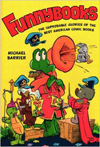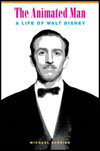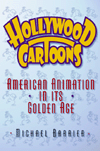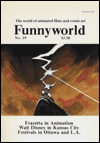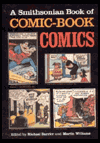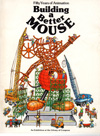
Funnyworld Revisited
Funnyworld began its life as mimeographed contribution to CAPA-alpha, an amateur press association devoted to the comics. With the twelfth issue, in 1970, I converted it to a professionally typeset and printed magazine. It lasted for eleven issues in that format under my editorship, appearing on average about once a year.
Reading Funnyworld now, I'm gratified by how well many of the articles and reviews and interviews, by me and by contributors like John Canemaker, Joe Adamson, Mark Kausler, Milton Gray, and Bill Blackbeard, have held up over the years. I'm reprinting (somehow that term doesn't sound quite right when applied to the Web!) some of those articles and reviews and interviews here.
"The Filming of Fritz the Cat" from Funnyworld No. 14 (1972) and No. 15 (1973) was the longest and most thoroughly researched and reported piece I ever published in the magazine. It's divided here into two parts, five long Web pages, matching the two parts and five chapters of the printed version. Click here to go to Chapter I, "Bucking the Tide," Chapter II, "Up from Brownsville," Chapter III, "Crumb, His Cat, and the Dotted Line," Chapter IV, "Coast to Coast Animation," or Chapter V, "A Strange Breed of Cat." Or click here to go to an introductory page with some thoughts on Ralph Bakshi's strange post-Fritz career. You can also read what R. Crumb thought about the first half of the article.
The unique and historic interview with Carl Stalling, Walt Disney's first composer and the composer of the scores for well over half the Warner Bros. cartoons, is at this link. It originally appeared in Funnyworld No. 13 (1971). The Stalling interview is also in print in the anthology The Cartoon Music Book, edited by Daniel Goldmark and Yuval Taylor (a cappella, paper, $18.95).
Two of Dick Huemer's "Huemeresque" columns are available, one about the great Disney story man Ted Sears, from Funnyworld No. 18 (1978), the other on "The Battle of Washington," Huemer's account of the selling of the idea for The New Spirit to the U.S. government, from Funnyworld No. 22 (1980).
Funnyworld No. 18 (1978) included a major feature on cartoon voices, "The Moving Drawing Speaks," with interviews of a half dozen important voice artists. I've posted three of those interviews, with the Disney voice artists Clarence Nash, Billy Bletcher, and Jim Macdonald.
Also available: an interview with Bob Clampett, the great director of Warner Bros. cartoons and creator of TV's Beany and Cecil, from Funnyworld No. 12 (1970), and from Funnyworld No. 13 (1971): a 1969 interview with Chuck Jones, another great director of Warner Bros. cartoons, and a brief essay on Robert Crumb by the late Harvey Pekar, best known now as the creator of the American Splendor comic books.
I've posted scans of a few complete pages from Funnyworld: my reviews of Wizards and Raggedy Ann and Andy from No. 17 (1978) and my essay "Jones: From 'Night Watchman' to 'Phantom Tollbooth'" from No. 13 (1971).
Other reprints from Funnyworld are available elsewhere on the Web:
¶ John Canemaker's "Elfriede! On the Road with Mrs. Oskar Fischinger," from Funnyworld No. 18 (1978), is on the Web at www.iotacenter.org/Elfriede/OntheRoad.htm.
¶ Joe Adamson's interview with Dick Huemer, "Working for the Fleischers," from Funnyworld No. 16 (1975), is on the Web at the Huemer family Web site, www.huemer.com, along with articles by and about Dick Huemer.
Quick Links
New to the site? Click here to go to a page that explains what it's all about.
To comment on anything on the site, write to me at the following address: michaelbarrier@comcast.net. I’ll assume that your comments are intended for publication unless you specify otherwise.
